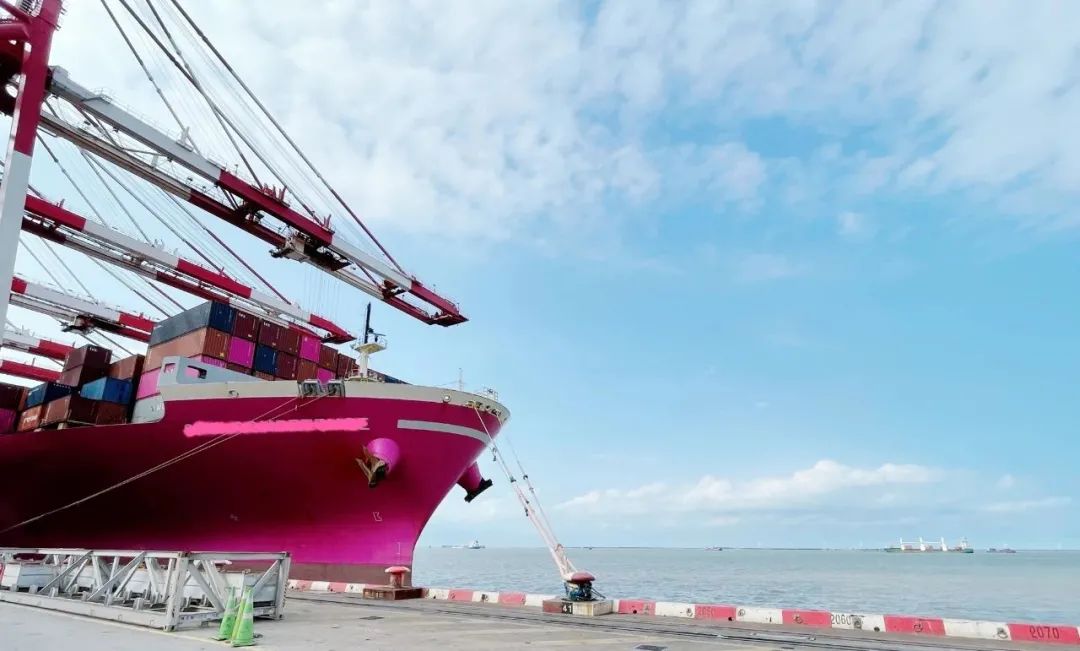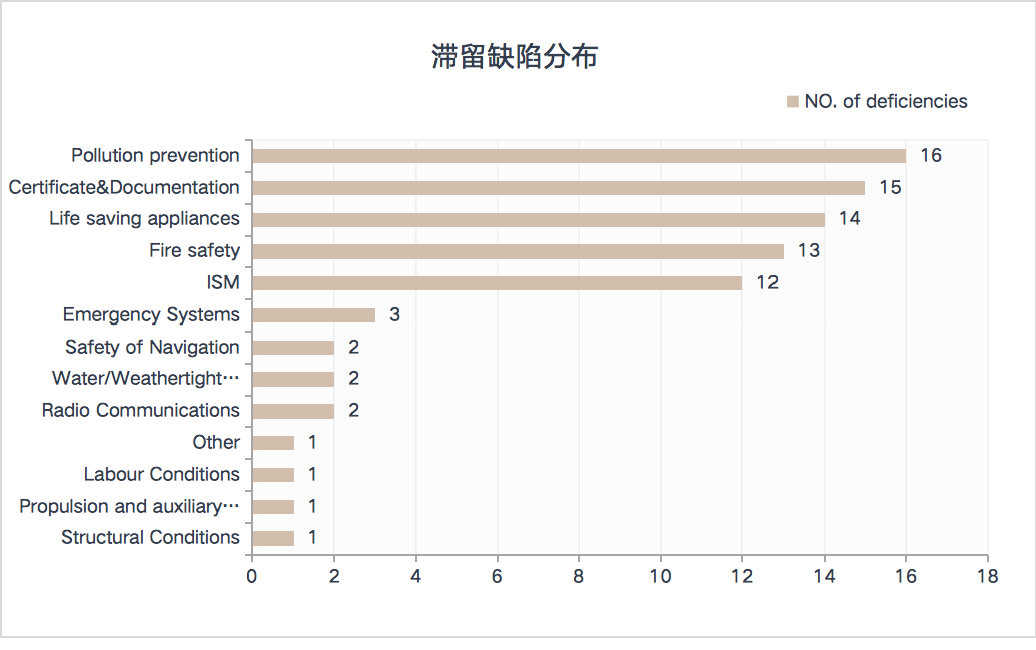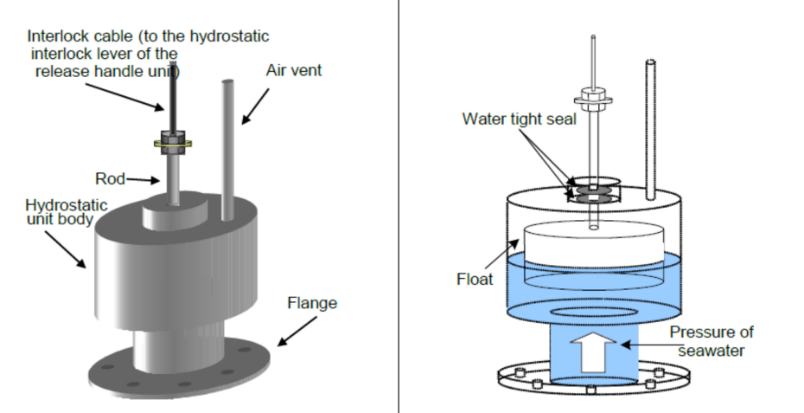2021年8月TOKYO-MOU地区PSC检查情况
数据来源于APCIS

PART ONE
1、基本检查情况
2021年8月1日至8月31日,东京备忘录地区共开展PSC检查1830艘次,发现缺陷3095项,其中滞留船舶39艘次,滞留率为2.13%。
2、船舶滞留情况
8月份10个国家/地区实施了滞留,澳大利亚滞留艘次最多,共滞留了13艘次,其次是中国。
滞留率最高的国家/地区依次是:澳大利亚,5.73%;印度尼西亚,3.57%;中国,2.68%。
3、滞留缺陷类别分布
8月份共开出滞留缺陷83条,占据首位的是防污染方面缺陷,其次是证书文书方面和救生设备相关缺陷。

02 典型滞留缺陷分析
1、静水压力连锁装置故障
缺陷描述:
Port lifeboat hydrostatic interlock system defective.
左舷救生艇静水压力连锁装置故障
公约原文:
LSA: 4.4.7.6.7.2:
on-load release capability shall release the lifeboat with a load on the hooks. This release mechanism shall be provided with a hydrostatic interlock unless other means are provided to ensure that the boat is waterborne before the release mechanism can be activated. In case of failure or when the boat is not waterborne, there shall be a means to override the hydrostatic interlock or similar device to allow emergency release. This interlock override capability shall be adequately protected against accidental or premature use. Adequate protection shall include special mechanical protection not normally required for off-load release, in addition to a danger sign. The protection shall be deliberately destroyed by applying a suitable minimum force, for instance by breaking a protection glass or translucent cover. A label or thin wire seal is not considered sufficiently robust. To prevent a premature on-load release, on-load operation of the release mechanism shall require multiple, deliberate and sustained action or actions by the operator;"
分析:
除了船舶使用单根吊艇索和吊钩系统,并附有适当的首缆的情况下外,使用单根或者多根吊艇索的非自由降落式救生艇外的其它救生艇和救助艇,均应附有可以保障吊艇钩顺利释放的机制。该机制能保证所有吊艇钩同时释放,且应保证在不同情况下的释放:正常释放和负载释放。规则对于负载释放,提出了静水压力连锁装置的要求。该装置应能保障在救生艇入水时自行解除保护装置,从而可以实现快速人力操作脱钩。然而在实际维护和保养中,经常由于不同的原因导致该装置存在一些问题。主要存在以下问题:1. 静水压力连锁保护装置未正确复位,在其它外力作用下易触发释放装置;2. 静水压力装置直通舷外的进水管堵住,导致静水压力不能传达到装置本体;3. 静水压力释放装置与艇体脱离,导致该装置不能工作。这要求船员要熟悉该装置的操作要求,掌握正确的维护保养措施,并认真开展日常检查和维护保养,确保该装置在紧急状态下的正常功能和状态。

2、违法排放有毒液体物质(货物残余)
缺陷描述:
CARGO DEPOSITED IN THE CARGO PIPING SYSYTEM AND WASHED BY FRESH WATER AT NIGHT ON 17-08-2021. TEH MIXTURE DISCHARGED TO THE YANGZI RIVER THROUGH THE MANIFOLD BY CREW DELIBERATELY.
货物管路系统中有货物残余(含有X/Y/Z类货物),船员在2021年8月17日夜间用淡水冲洗货物管路,并故意将混合物通过歧管排入长江。
公约原文:
M73/78/ANII/CH5:
Chapter 5 - Operational discharges of residues of noxious liquid substances:
Regulation 13.1.1: The discharge into the sea of residues of substances assigned to category X, Y or Z or of those provisionally assessed as such or ballast water, tank washings or other mixtures containing such substances shall be prohibited unless such discharges are made in full compliance with the applicable operational requirements contained in this Annex.
2Discharge standards
2.1 Where the provisions in this regulation allow the discharge into the sea of residues of substances in category X, Y or Z or of those provisionally assessed as such or ballast water, tank washings or other mixtures containing such substances, the following discharge standards shall apply:
.1the ship is proceeding en route at a speed of at least 7 knots in the case of self-propelled
ships or at least 4 knots in the case of ships which are not self-propelled;
.2the discharge is made below the waterline through the underwater discharge outlet(s) not
exceeding the maximum rate for which the underwater discharge outlet(s) is (are) designed; and
.3the discharge is made at a distance of not less than 12 nautical miles from the nearest
land in a depth of water of not less than 25 m.
分析:
根据MARPOL公约附则II—控制散装有毒液体物质污染规则要求,除排放系为保障船舶或人命安全等例外情况外,所有核准载运散装运输有毒液体物质的船舶均应遵守相应排放规定,禁止将X、Y或Z类物质或临时评定为此类物质的残余物或含有此类物质的压载水、洗舱水或其他混合物排放入海,除非此类排放完全符合本附则所含的适用操作要求,即满足:.1 船舶在海上航行,自航船航速至少为7节,或非自航船航速至少为4节;.2 在水线以下通过水下排放口进行排放,不超过水下排放口的最高设计速率;和.3 排放时距最近陆地不小于12海里,水深不小于25 m。
此外,载运X、Y、Z类货物后还应进行预洗,主要要求有:1)已被卸完X类物质货物的货舱,在船舶离开卸货港口之前,应予以预洗。清洗的残余物其浓度重量处于或低于0.1 % 之前应被排至接收设备;2)如果Y或Z类物质未按《手册》要求进行卸载,在船舶离开卸货港口之前,应予以预洗,除非采取了其他替代措施。预洗后的洗舱水应被排放至卸货港口的接收设备,或排放至有合适接收设备的另一港口;3)关于Y类高粘度或固化物质,应适用规定的预洗程序; 预洗时产生的残余物/水混合物应被排放至接收设备,直至货舱排空。
本案例中,船员故意在长江禁排水域内排放有毒液体物质洗舱水,性质恶劣,船舶在PSC检查中被滞留没有异议。
3、救生筏不能即刻可用
缺陷描述:
The forecastle liferaft is not ready for use in case of emergency because it is installed inside a padlocked cage.
首楼(远置)救生筏安装在一个挂锁笼内,不能在紧急情况下即刻可用。
公约原文:
S74-17/CIII/R20.2:Operational readiness
Before the ship leaves port and at all times during the voyage, all life-saving appliances shall be in working order and ready for immediate use.
S74-17/CIII/R31.1.4
Cargo ships where the horizontal distance from the extreme end of the stem or stern of the ship to the nearest end of the closest survival craft is more than 100 m shall carry, in addition to the liferafts required by paragraphs 1.1.2 and 1.2.2, a liferaft stowed as far forward or aft, or one as far forward and another as far aft, as is reasonable and practicable. Such liferaft or liferafts may be securely fastened so as to permit manual release and need not be of the type which can be launched from an approved launching device.
分析:
根据SOLAS公约的上述要求,在船舶离港前以及在航行期间的任何时候,所有救生设备均应处于即刻可用状态。本案例中,该船首楼距离最近的救生艇筏的距离超过了100米,根据要求配备了远置救生筏,但该救生筏被锁在笼内,不能满足在紧急情况下的即刻可用要求。另外,远置救生筏附近还需配备救生服、救生衣、照明设备、以及登乘梯等,如果缺少这些相应的配备,同样也会被开具缺陷。
11-26 来源:验船师袁晓东 船之友
12-31 来源:阳光安检
10-20 来源: 蓝盾安检创新工作室
02-23 来源:洋山港海事局
01-30 来源:信德海事网
01-22 来源:信德海事网
03-28 来源:张家港海事局船舶交通管理中心
08-01 来源:蓝盾安检
01-06 来源:中山海事
09-24 来源: 蓝盾安检创新工作室